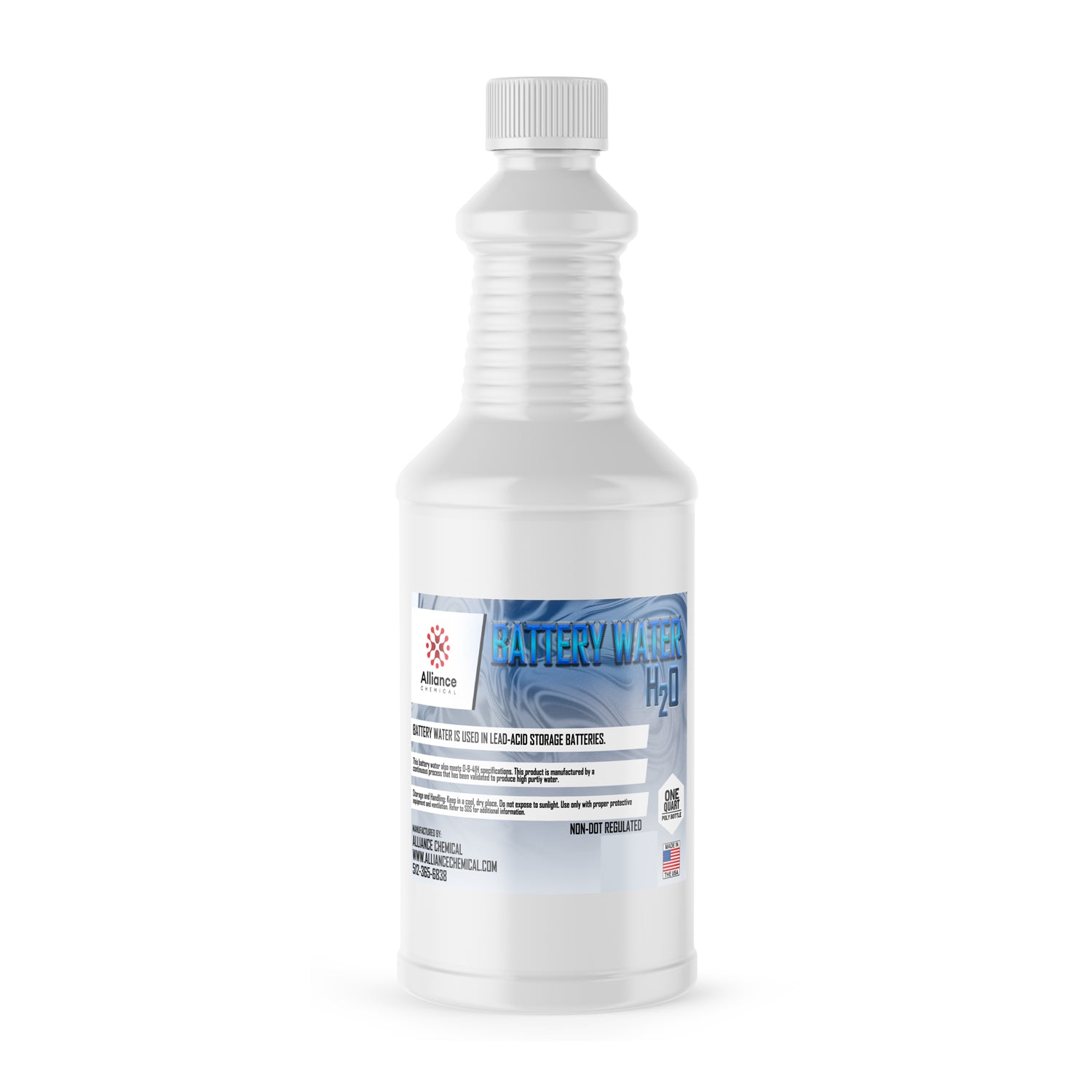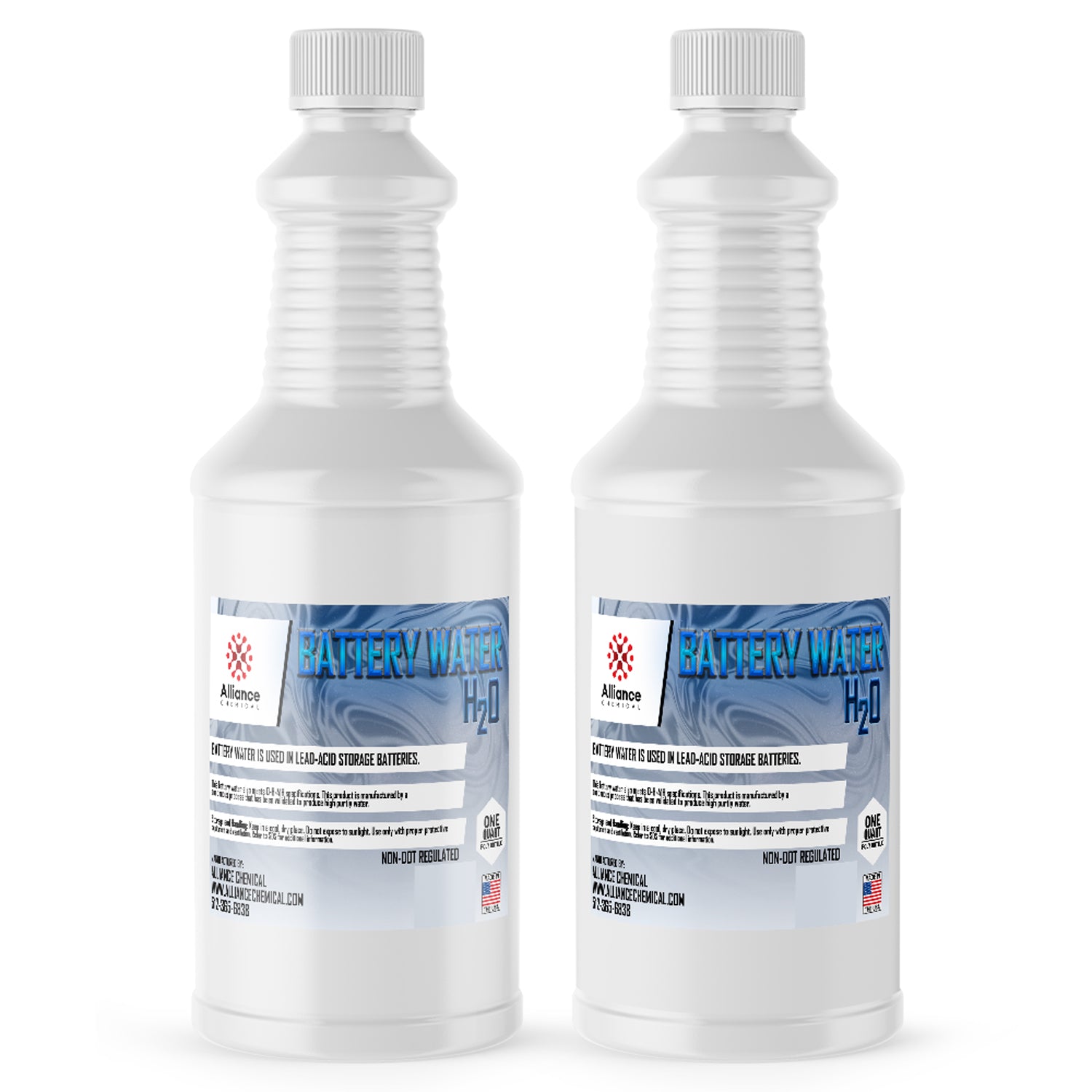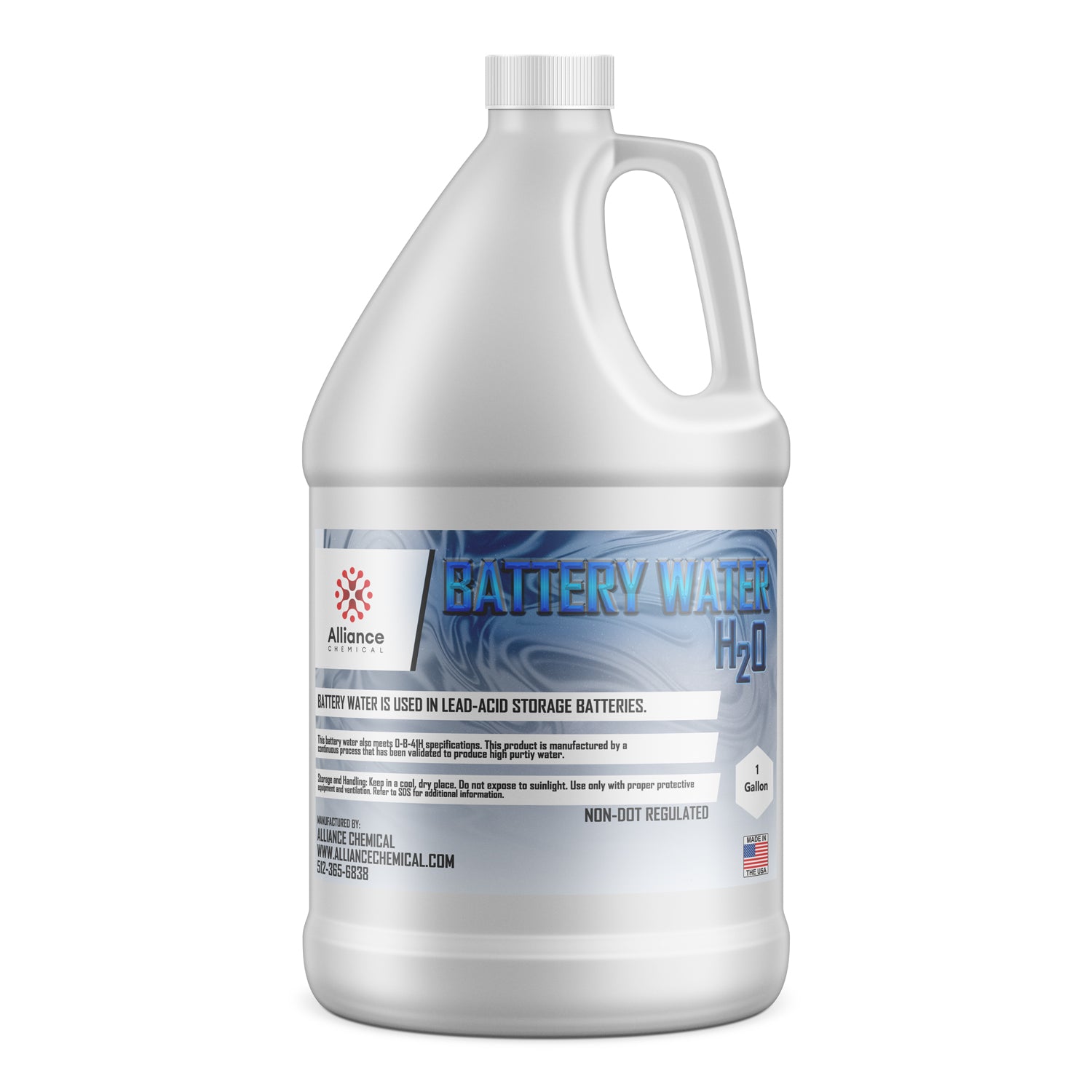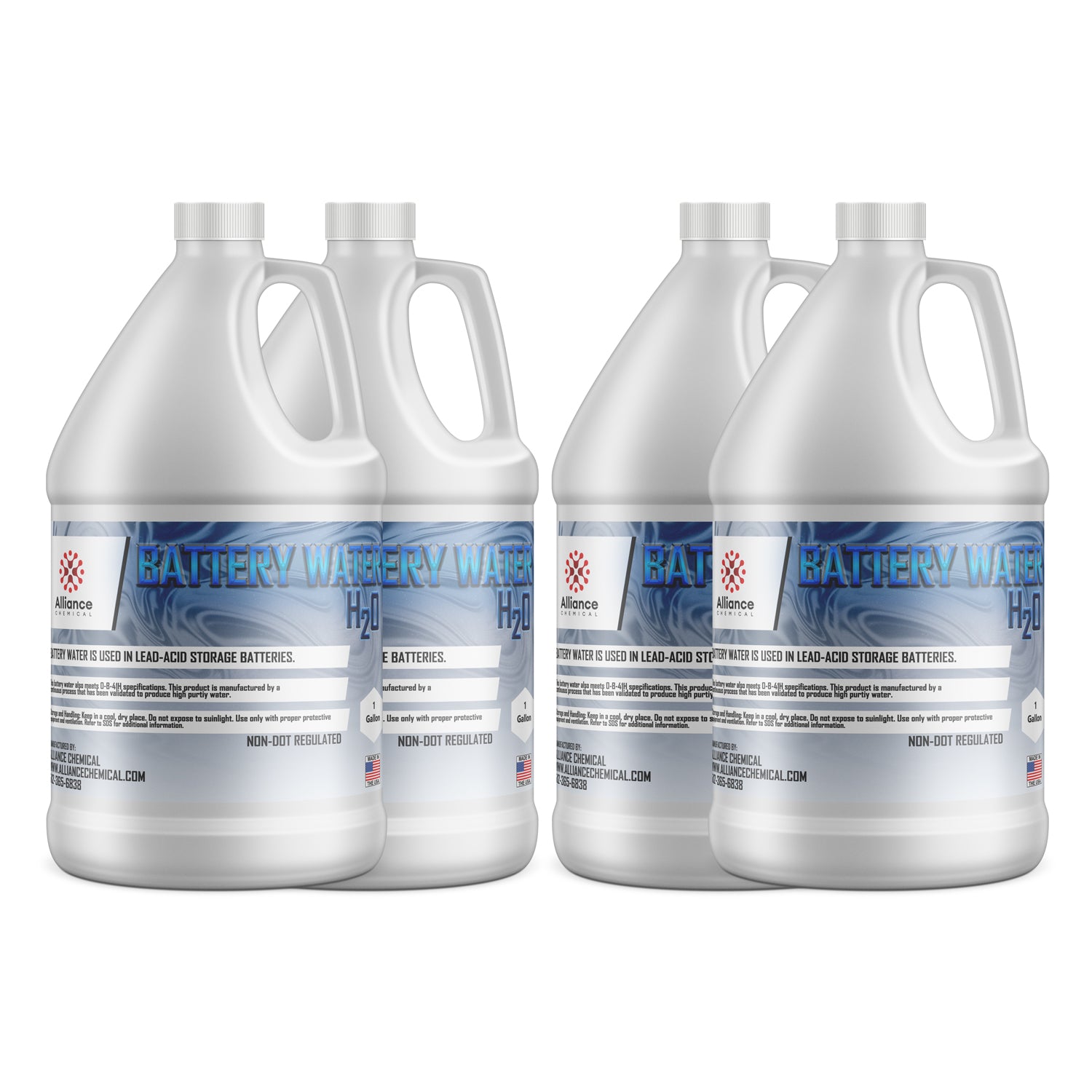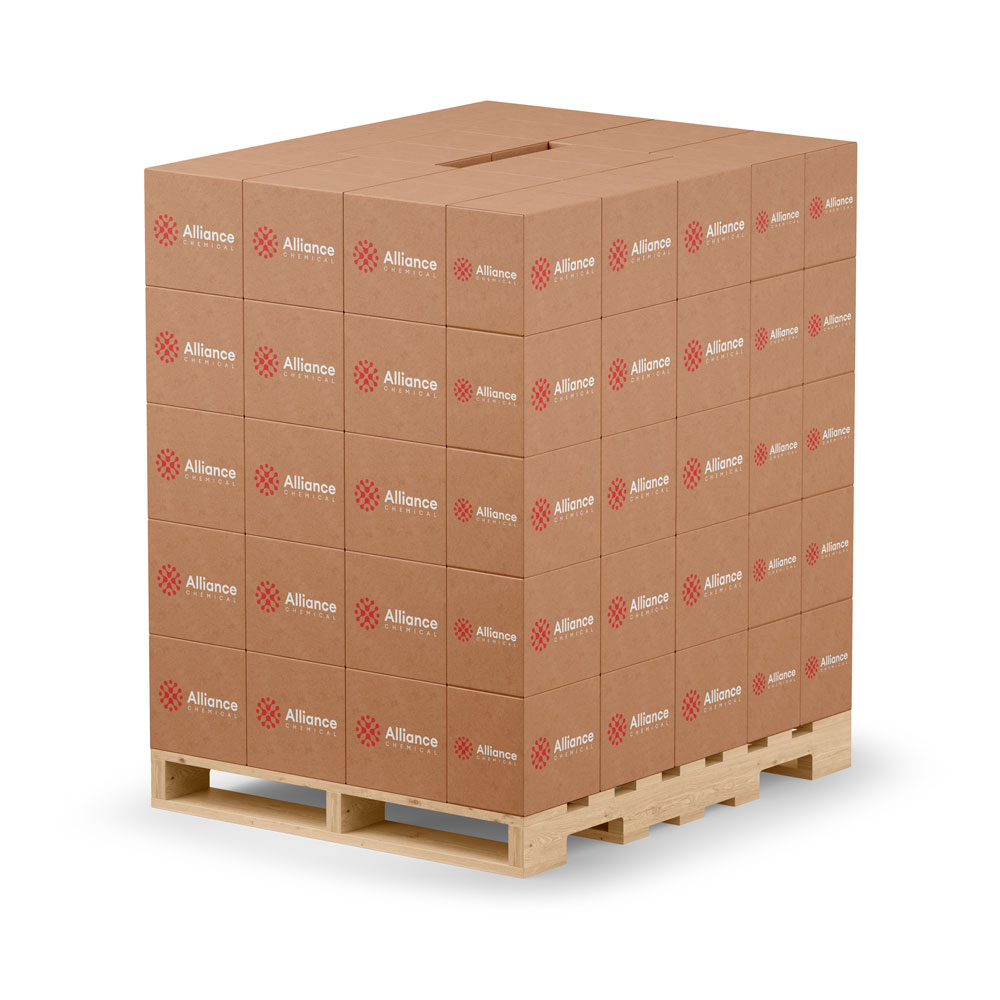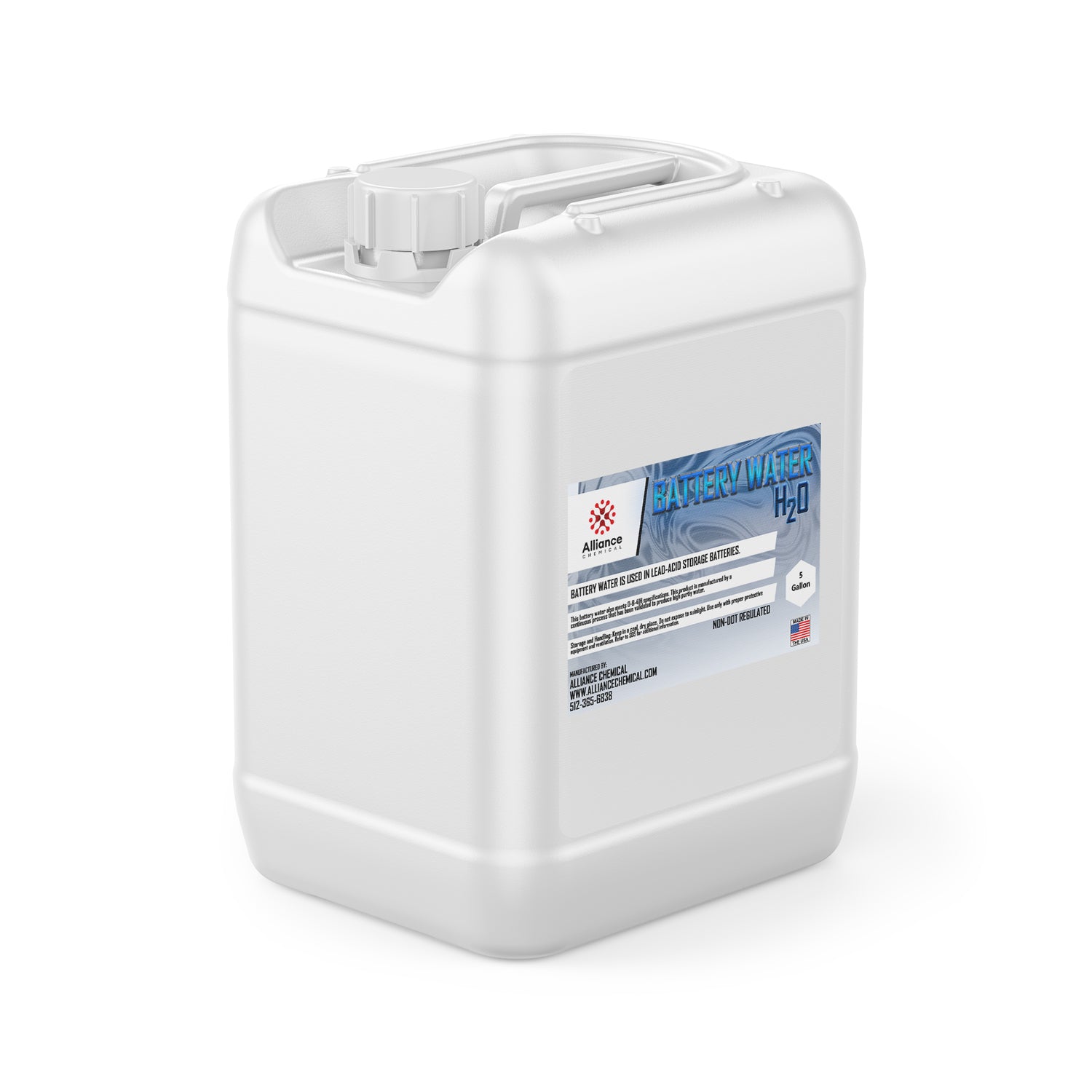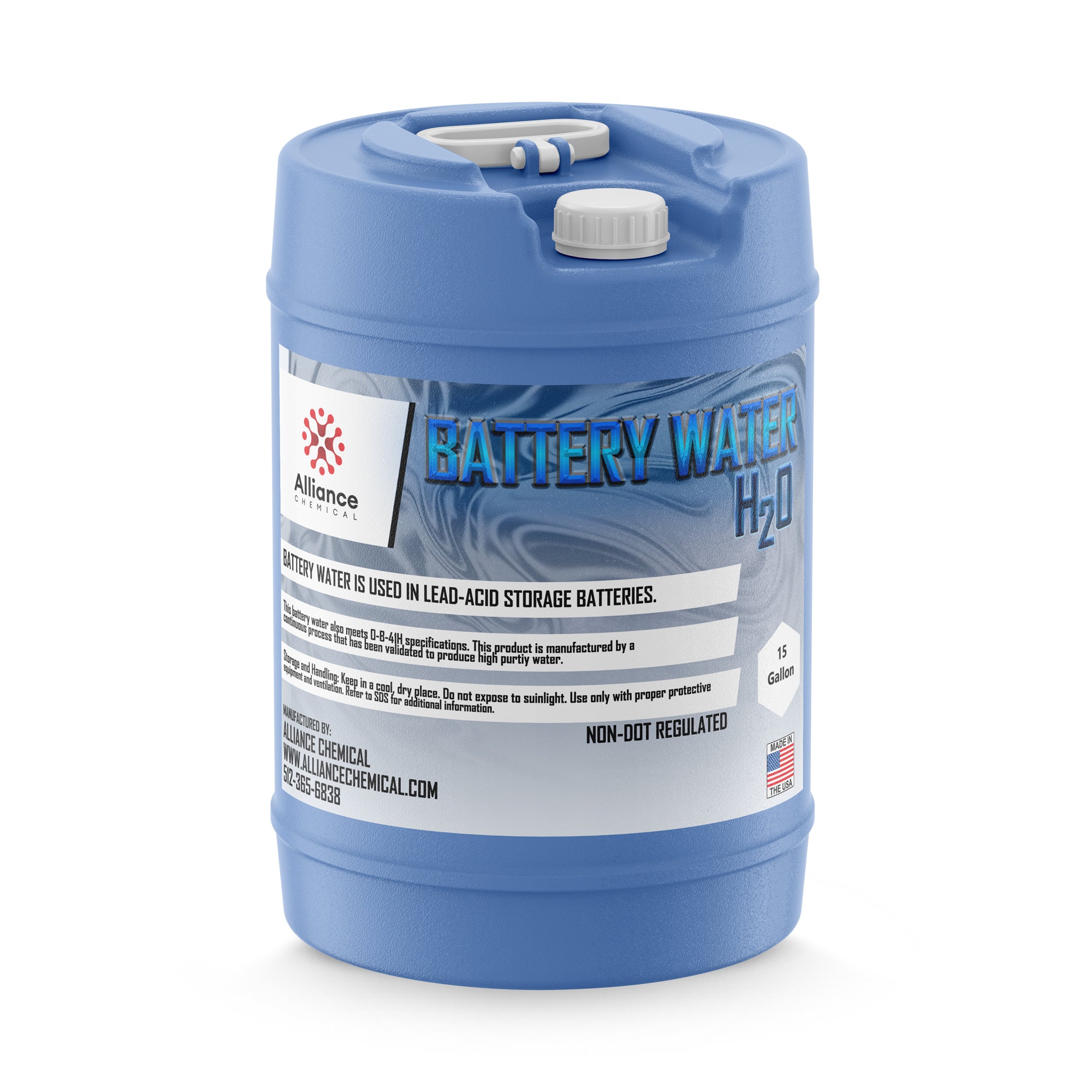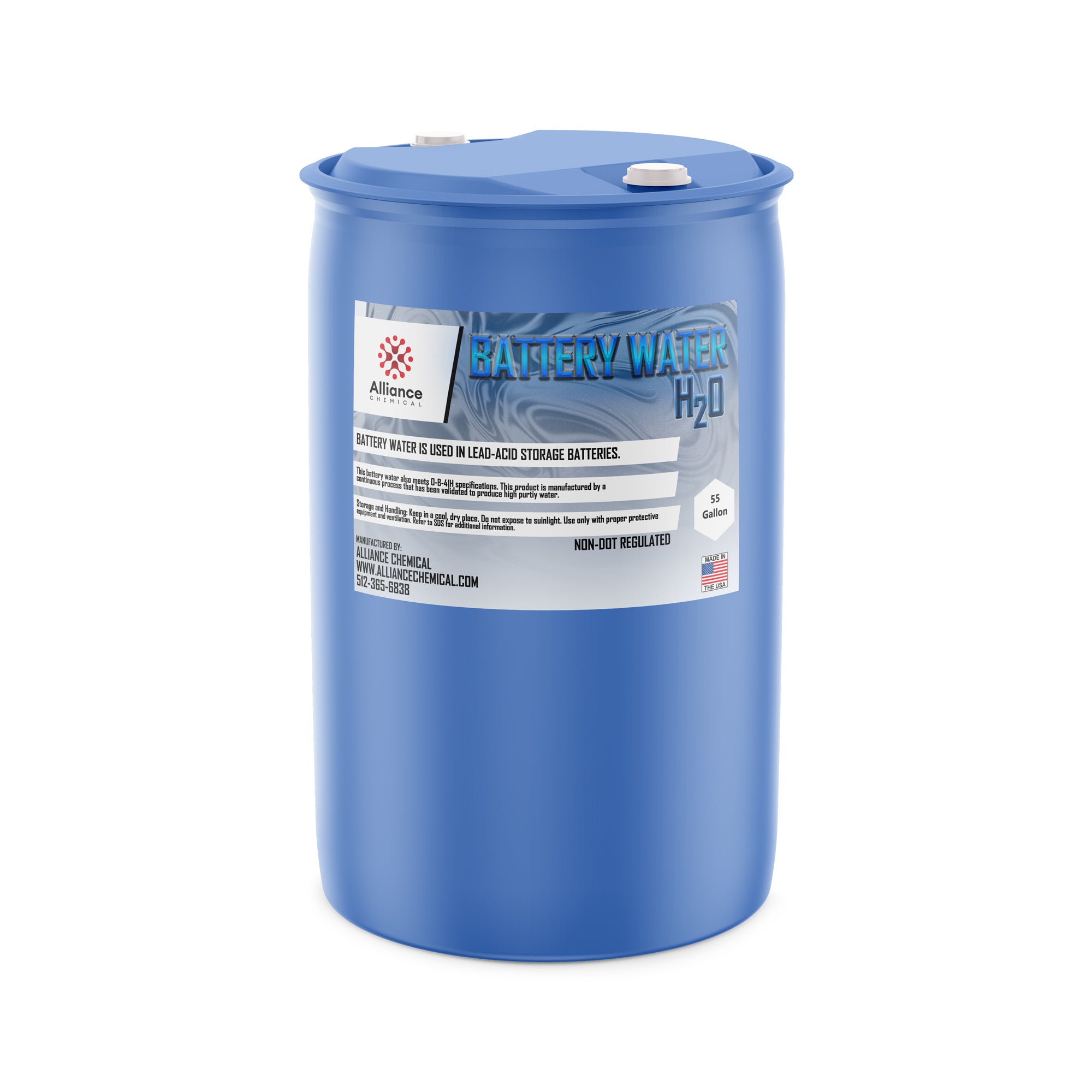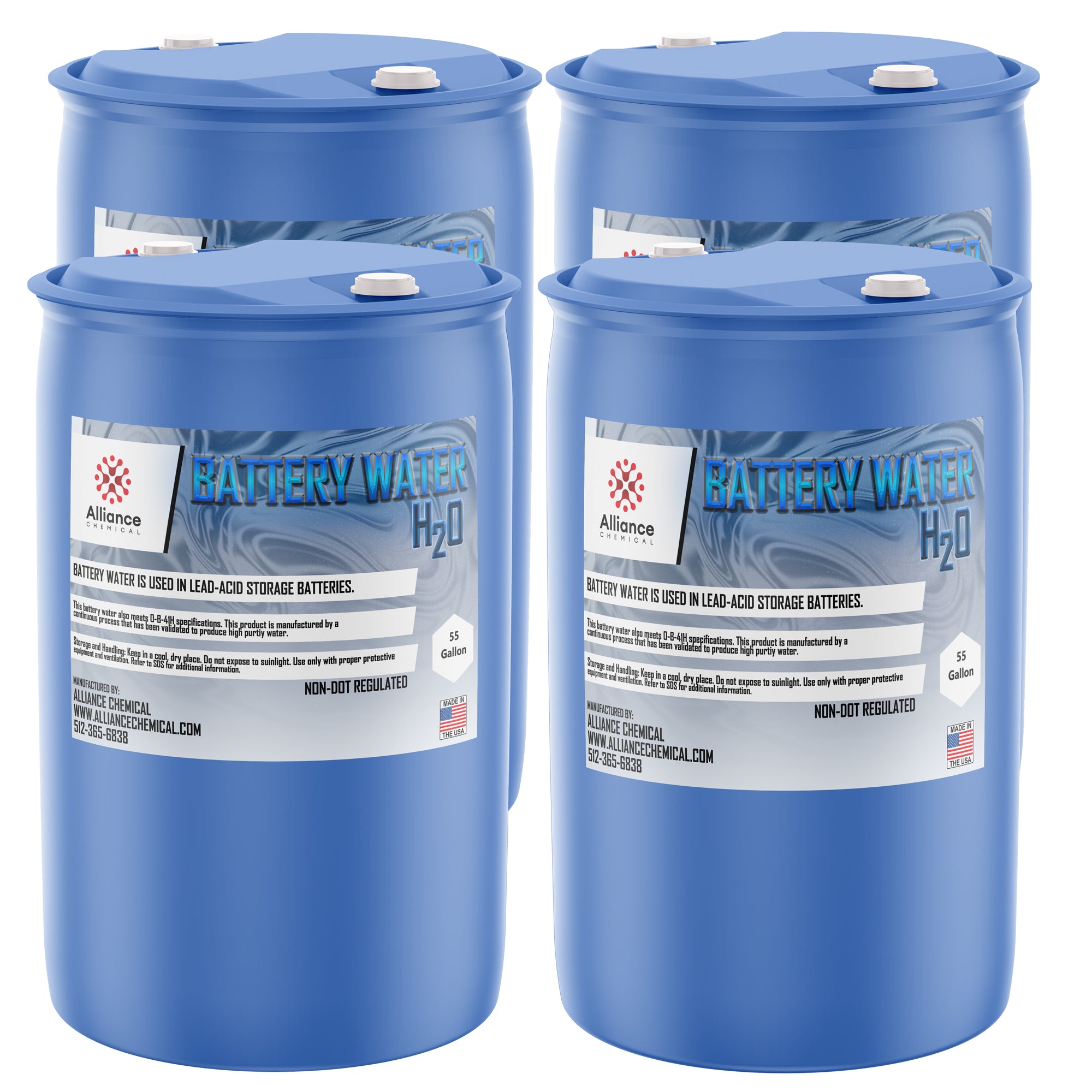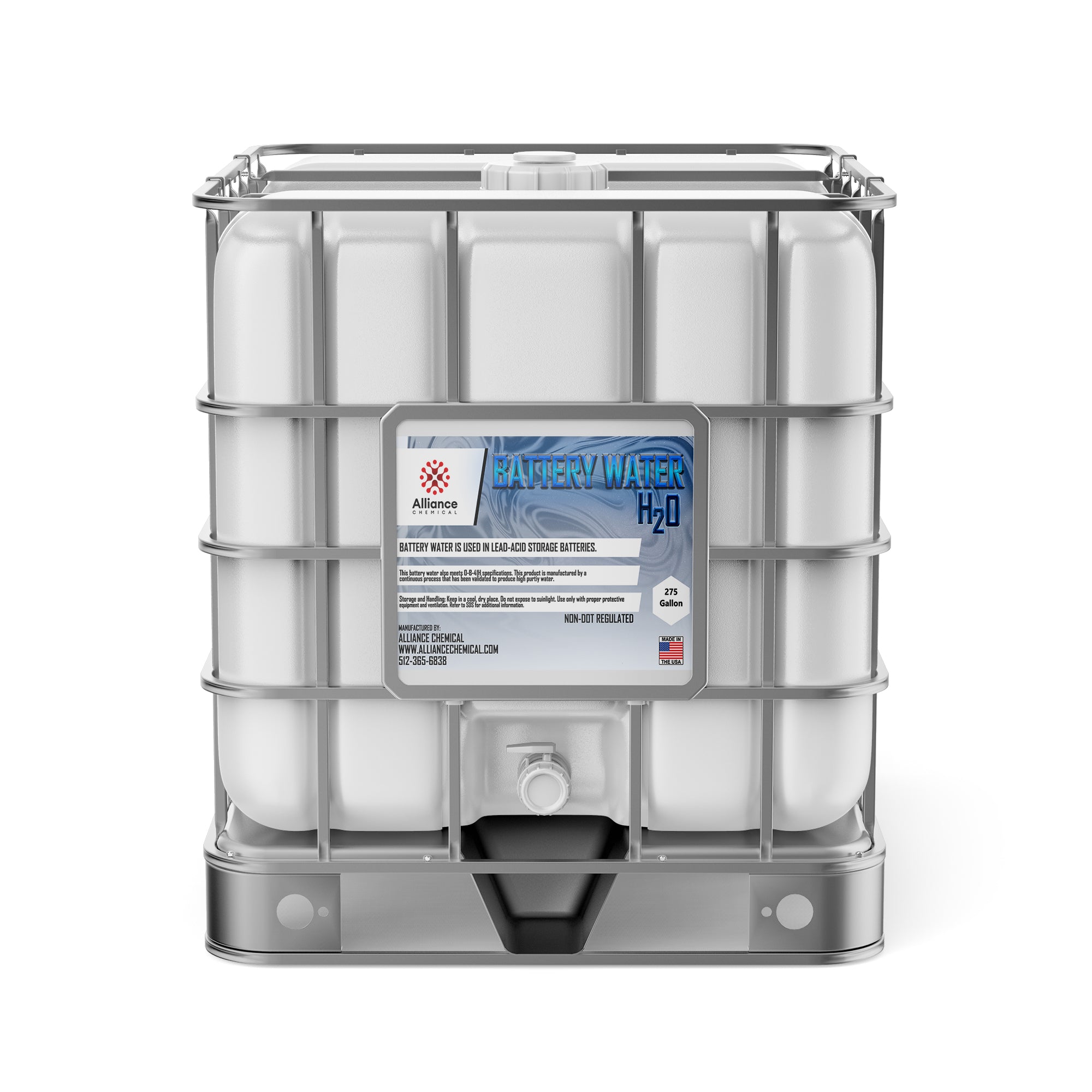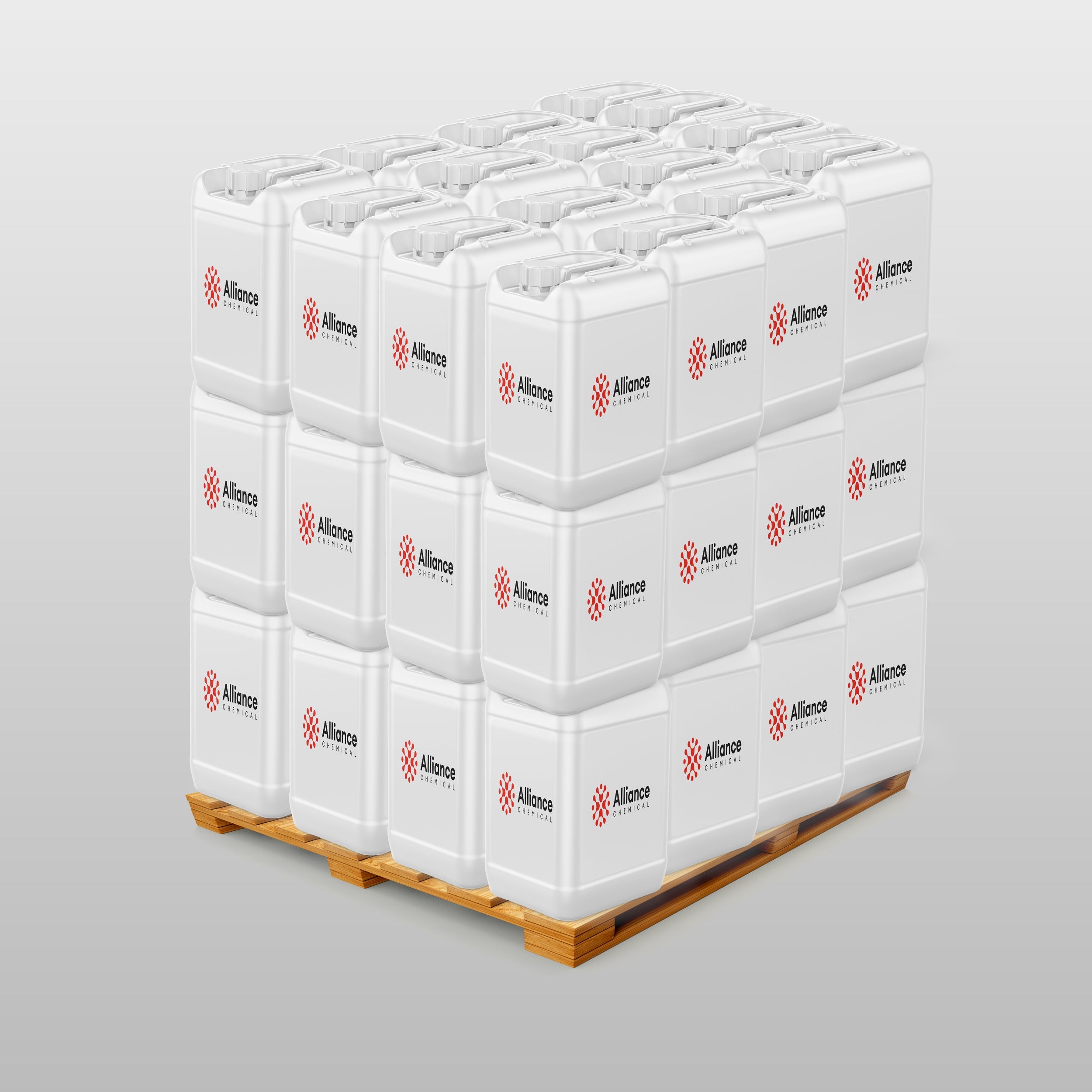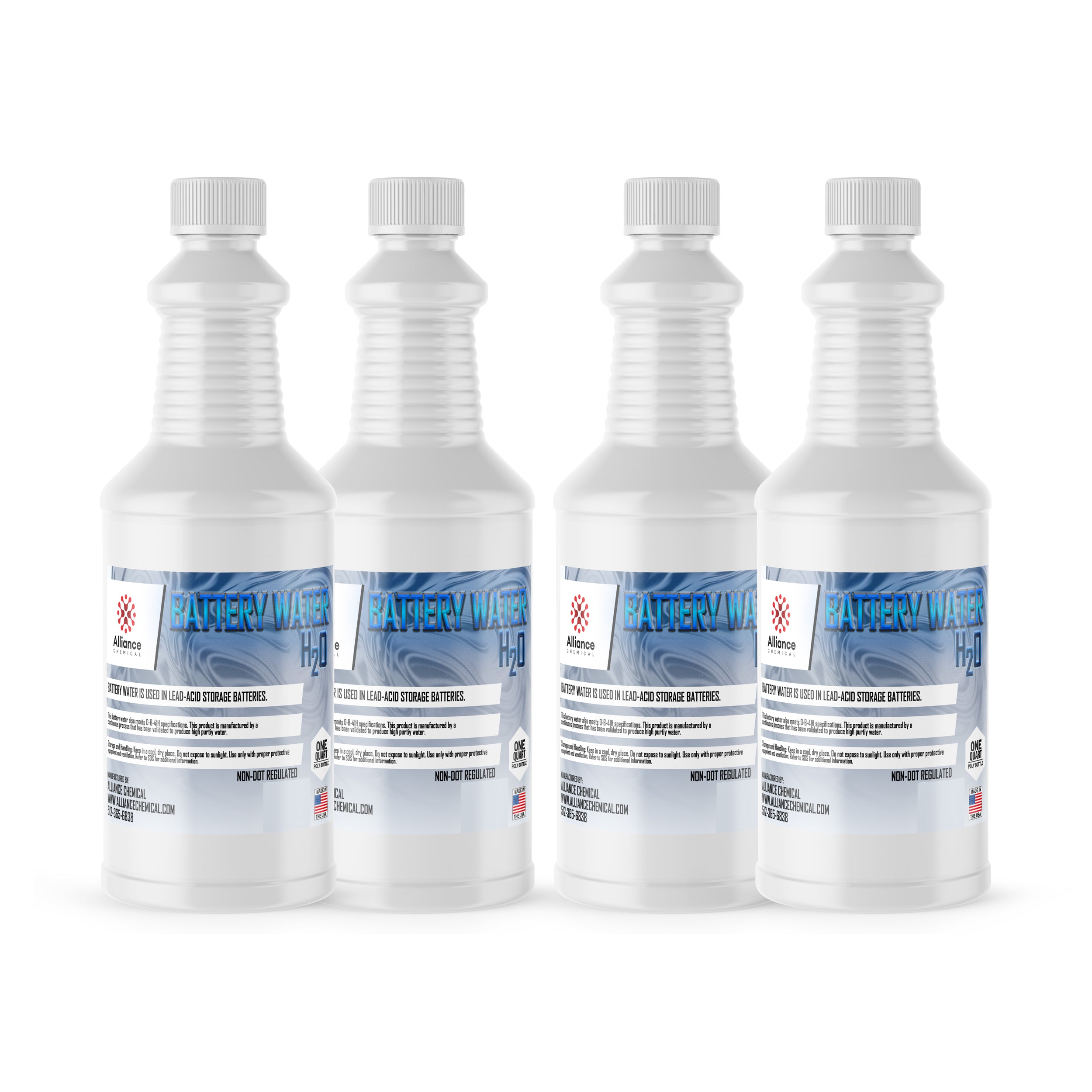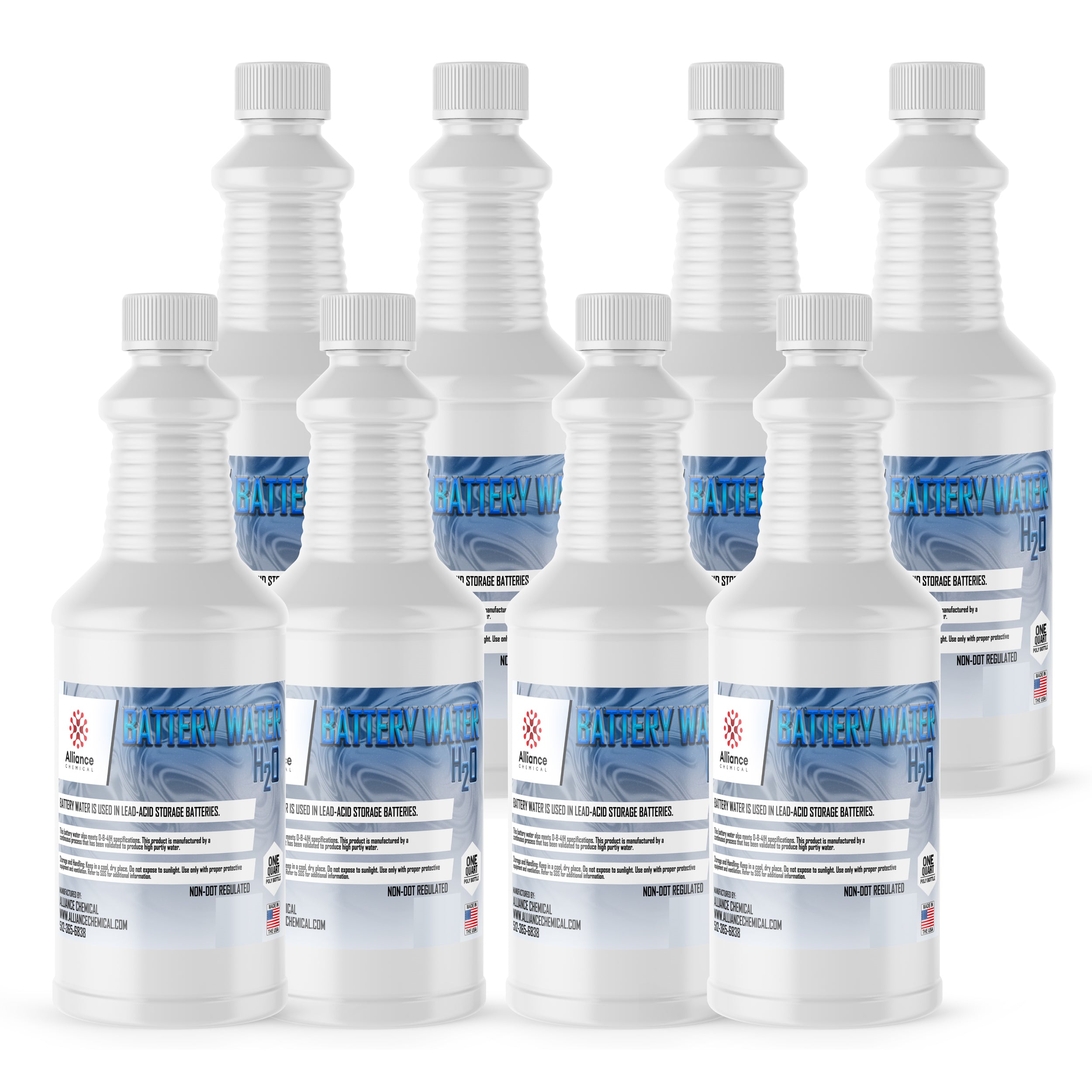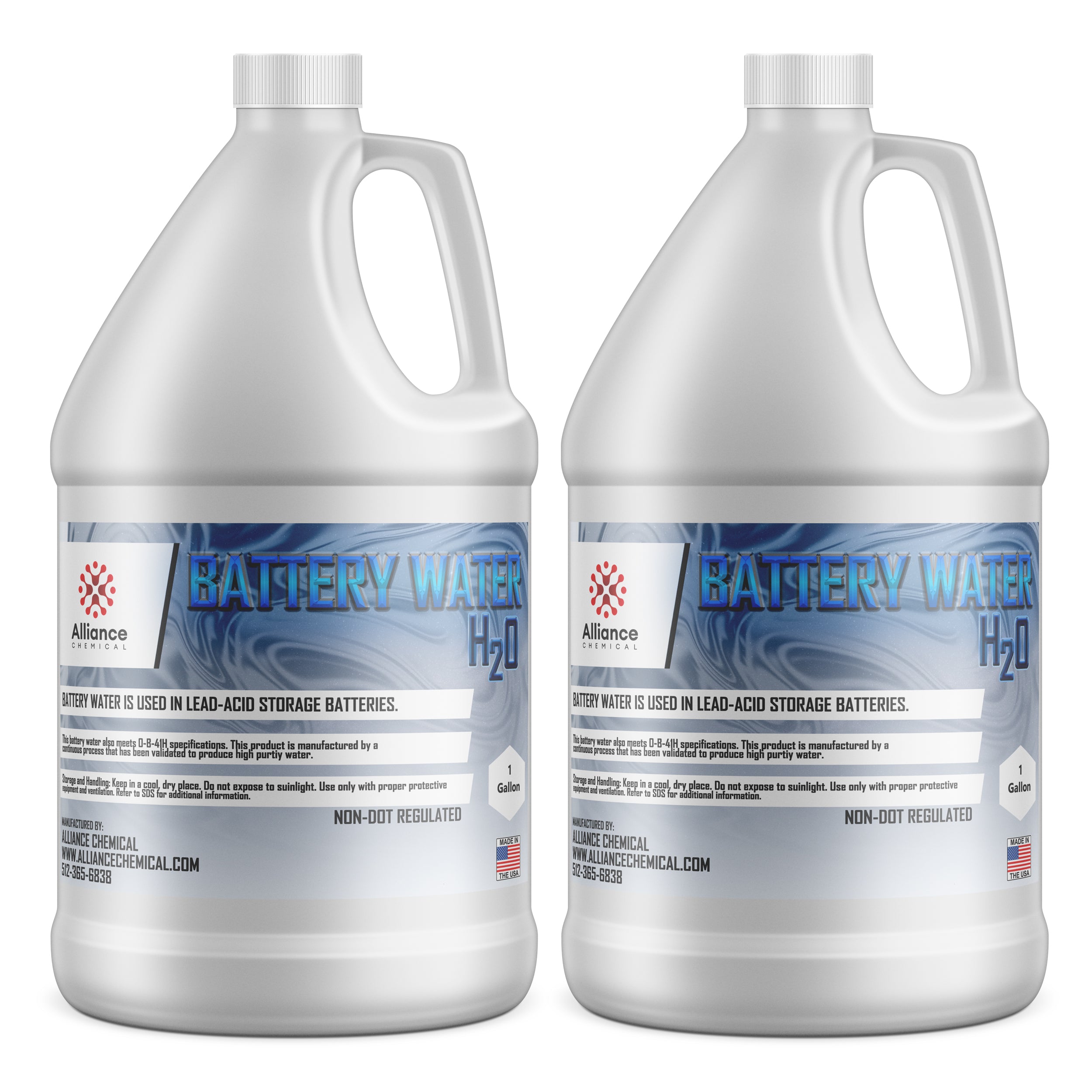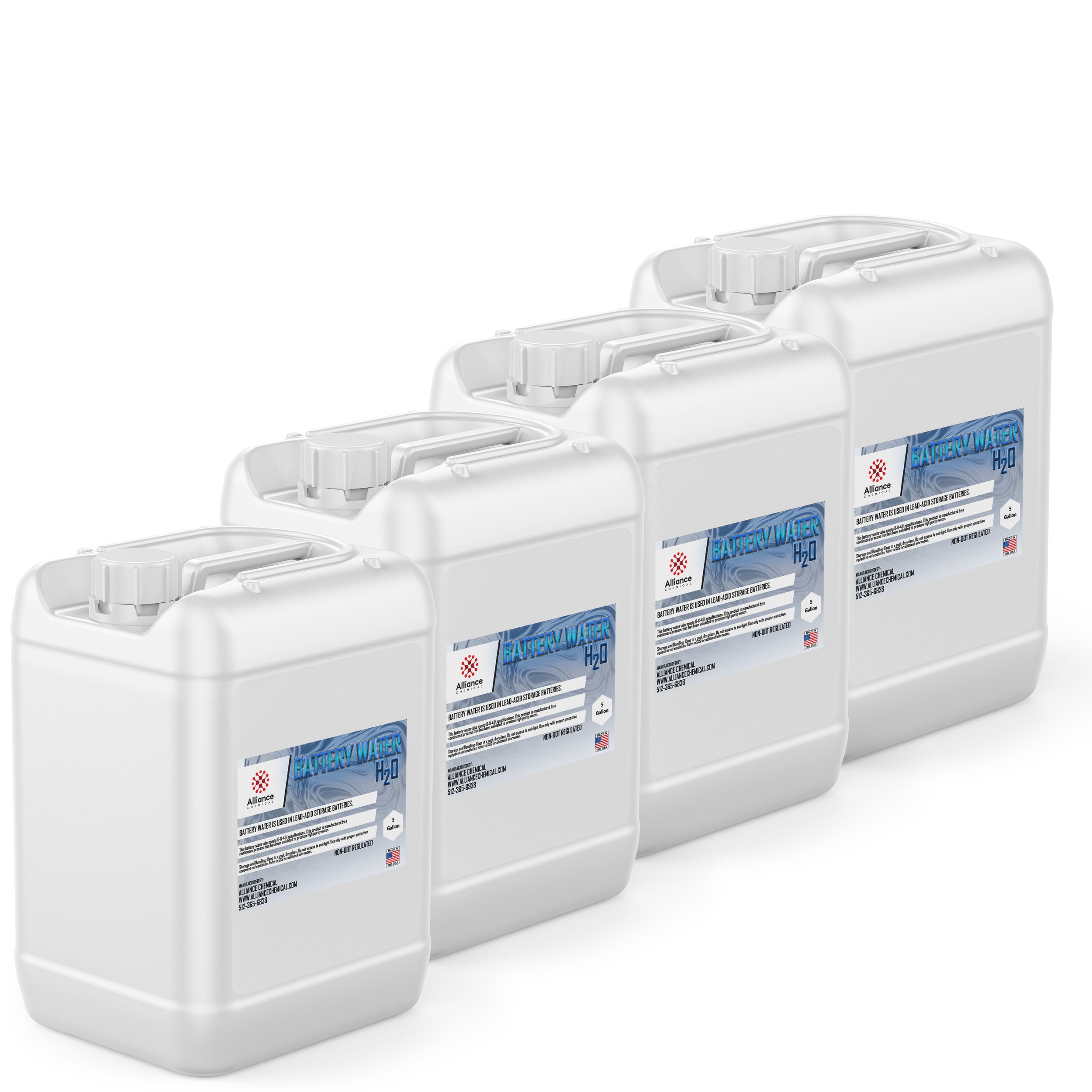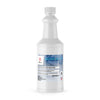Ask a question
Product Overview
Battery Water is a technical grade, highly purified deionized and distilled water engineered for demanding electrochemical applications. Its composition is controlled to remove minerals and impurities, ensuring an electrolyte balance suitable for lead‑acid battery systems and related industrial processes. The product is characterized by very low ionic contaminants, with established limits for chlorides, sulfates, nitrates, and trace metals, enabling consistent performance in critical battery maintenance and analytical workflows. The combination of high purity, stable pH behavior, and low conductivity supports prolonged battery life and minimizes mineral buildup within electrolyte matrices.
In addition to battery maintenance, Battery Water serves as a reliable solvent and diluent in laboratory procedures, electrolyte solution preparation, cooling systems, and hydroponic nutrient transport. Its compatibility with a wide range of reagents, together with strict quality control and traceability to technical grade standards, makes it a trusted choice for automotive, industrial, and research environments seeking reproducible results and minimized contamination risk.
Key Properties
- Property Name: Assay (Water Purity) – 99.9% to 100.0% (Gravimetric/IC-based purity)
- Chemical Formula: H₂O
- Molecular Weight: 18.02 g/mol
- Boiling Point: 100°C
- Specific Gravity (20°C): 0.998 – 1.000; typical 0.999
- Residue After Ignition: ≤ 0.01% (typical 0.002%)
- Chloride: ≤ 5 ppm (typical 2 ppm)
- Nitrate (NO₃⁻): ≤ 0.5 ppm (typical 0.1 ppm)
- Ammonium (NH₄⁺): ≤ 0.1 ppm (typical 0.02 ppm)
- Sulfate (SO₄²⁻): ≤ 5 ppm (typical 1 ppm)
- Phosphate (PO₄³⁻): ≤ 0.1 ppm (typical 0.02 ppm)
- Arsenic (As): ≤ 0.01 ppm (typical 0.003 ppm)
- Heavy Metals (Pb as Pb): ≤ 0.005 ppm (typical 0.001 ppm)
- Iron (Fe): ≤ 0.1 ppm (typical 0.02 ppm)
- Copper (Cu): ≤ 0.1 ppm (typical 0.02 ppm)
- Manganese (Mn): ≤ 0.2 ppm (typical 0.05 ppm)
- Nickel (Ni): ≤ 0.05 ppm (typical 0.01 ppm)
- Lead (Pb): ≤ 0.05 ppm (typical 0.01 ppm)
- Zinc (Zn): ≤ 0.2 ppm (typical 0.05 ppm)
- Aluminum (Al): ≤ 0.1 ppm (typical 0.02 ppm)
- Chromium (Cr): ≤ 0.05 ppm (typical 0.01 ppm)
- Cobalt (Co): ≤ 0.05 ppm (typical 0.01 ppm)
- Calcium (Ca): ≤ 20 ppm (typical 5 ppm)
- Magnesium (Mg): ≤ 10 ppm (typical 2 ppm)
- Potassium (K): ≤ 5 ppm (typical 1 ppm)
- Sodium (Na): ≤ 5 ppm (typical 1 ppm)
Common Applications
- Lead-Acid Battery Maintenance: Used to refill lead-acid batteries to maintain electrolyte levels and prevent damage due to mineral buildup and imbalance.
- Electrolyte Solution Preparation: Serves as a base for preparing electrolyte solutions in various battery technologies, ensuring consistent conductivity and purity.
- Laboratory Reagent: Utilized as a solvent and diluent in analytical and chemical procedures requiring high-purity water.
- Cooling Systems: Employed in cooling circuits to minimize mineral deposits and sustain system efficiency.
- Industrial Cleaning and Rinse Water: Provides a neutral-quality rinse for components and vessels in controlled environments.
- Calibration and Instrumentation: Used as a reference solvent for IC/OES-based analyses to prevent trace contamination.
Safety Precautions
Handling and storage should follow standard laboratory and industrial practices for high-purity water. Store in cool, dry conditions away from direct sunlight, using HDPE containers to prevent leaching. Keep containers tightly sealed to avoid evaporation and contamination, and protect from contact with strong acids or bases that could alter purity. Wear appropriate PPE, including chemical-resistant gloves and safety goggles, when handling to prevent any potential exposure from splashes or aerosols.
Additional safety considerations include maintaining closed systems during transfer to minimize airborne particulates, ensuring proper labeling and segregation from incompatible materials, and adhering to your site’s chemical hygiene plan. In the event of exposure, follow standard first-aid measures: rinse eyes with large volumes of water for at least 15 minutes, wash skin with soap and water, move to fresh air if inhaled, and rinse mouth and drink water if ingested. Transport of this material should follow UN 1760 guidelines for corrosive liquids, Class 8, PG III, until proper packaging and handling changes are implemented.
Benefits
✔ High Purity and Consistency – Meets stringent technical grade specifications with low ionic content, ensuring reliable battery electrolyte performance and minimal contamination risk.
✔ Controlled Impurity Profile – Trace metals and anions are within tight tolerances, supporting accurate analytical work and stable electrode behavior.
✔ Compatibility – Compatible with common battery chemistries, laboratory reagents, and cooling systems, reducing compatibility concerns across applications.
✔ Stability and Storage – Long shelf life (36 months when stored properly) with clear handling guidelines to maintain quality over time.
| Property | Value |
|---|---|
| Molecular Weight | 18.02 g/mol |
| Formula | H2O |
| Flash Point | Not applicable |
| Form | Liquid |
| Solubility | Soluble in water |
| Appearance | Clear, colorless liquid |
| Melting Point | 0 °C |
| Boiling Point | 100 °C |
| Specific Gravity | 1.0 |
| Industry | Industrial, Wastewater, Power Systems |
87L-488-M3N
$22.00
Unit price
Compare Products
| Price |
|---|
| SKU |
| Rating |
| Discount |
| Vendor |
| Tags |
| Weight |
| Stock |
| Short Description |

